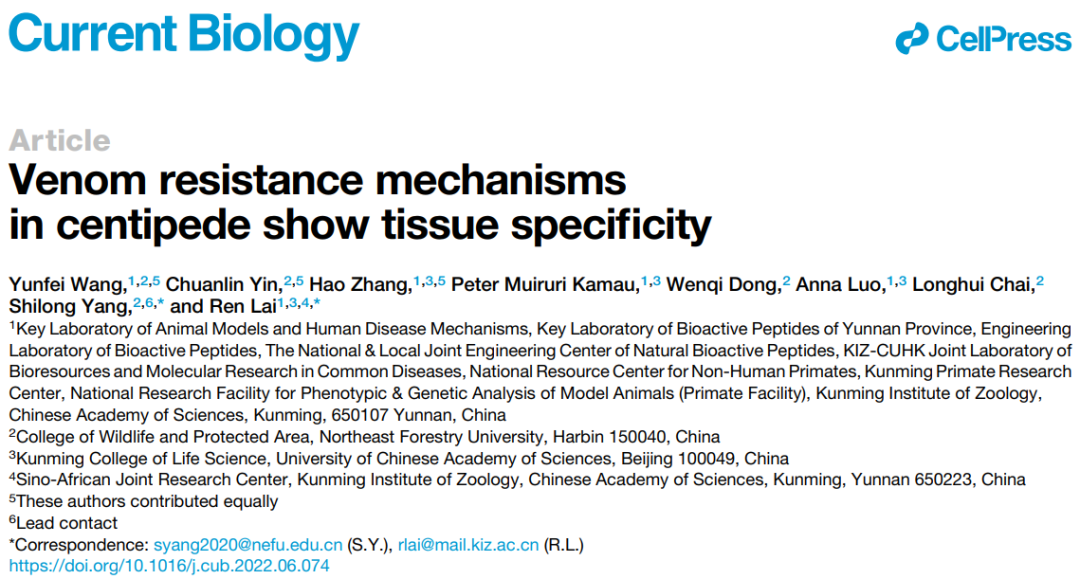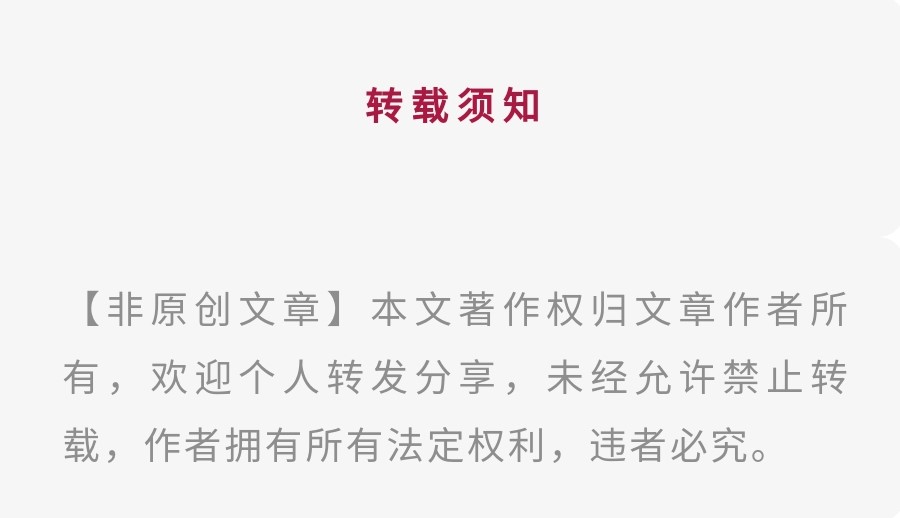How to properly manage toxic animals to manage toxins "weapon library"
Author:Bioart biological art Time:2022.07.23

Venoms of poisonous animals originated from the specialization of certain organs, such as the first pair of footsteps, the end of the scorpion, the spider's mouthpiece, etc. These poison glands are used to secrete and store venom. In the body of venom in injection of prey, natural enemies, or competitors, toxins have performed physiological ecological functions such as predation and defense through targeting corresponding receptors. Research team led by Researcher Lai Yan, a researcher at the Institute of Kunming Institute of Chinese Academy of Sciences, has long been concerned about the strategy of survival adaptation of toxic animals and its material foundation and ecological physiological mechanism. 7] And the key toxin composition and mechanism of ecological functions such as [8] and other ecological functions, and develop a fast diagnosis method and treatment method on this basis.
Toxic animals must properly manage the toxins with extremely high biological activity in their venom to prevent self -poisoning. At the molecular level, there are two strategies to block self -poisoning: the first strategy is to use the "sponge" molecules to combine toxins in advance, so that it cannot work with its own receptor [9]. This strategy is at the cost of reducing the toxicity and poisoning efficiency of toxins to potential "enemies". The second strategy is to modify its own receptor, so that toxins cannot be combined with their own receptors [8]. But toxin -targeted receptors often perform important physiological functions, and modifying their own receptors may cause serious damage to their own physiological function. It can be seen that the two -edged sword, on the one hand, provides a powerful weapon and equipment for the survival of toxic animals, but also puts forward extremely high requirements for these "chemical weapons" of toxic animal safety management. Can poisonous animals safely manage their own venom arsenal to prevent these toxin molecules affect their physiological function?
On July 20, 2022, the Lai Yan research team of the Kunming Institute of Animal Institute of Chinese Academy of Sciences and the Yang Shilong research team of Northeast Forestry University published on the Current Biology entitled Venom Resistance Mechanisms in Centiped Tissue Sperse. This study revealed: The variable shear of the tissue specificity of the poisonous gland can make the mutations of their own receptor only occur in the poison glands, while other organs that do not expose toxins do not require mutation. Functional price.

In this work, researchers used the Shake Robbin, which are widely distributed in China as the research object to explore the mechanism of self -tolerance of toxins. It is worth noting that SSTX is a key toxin polypeptide used for predation. It targets the potassium ion channel of the prey KCNQ family to quickly poison the prey [2]. Therefore, the tolerance of SSTX is essential to complete the KCNQ channel. The researchers found that KCNQ1 was highly expressed in the poisonous glands, but these KCNQ1 messenger RNA (mRNA) sequences were different from MRNA in other tissues. This is because the KCNQ1 gene in the poisonous glands adopts a unique shear mode. In the poisonous gland tissue, the sequences of the hole area of the KCNQ1 potassium ion channel and the cross -membrane area S6 are encoded by the outer 6 of the KCNQ1 gene, and in other tissues, the area is encoded by the KCNQ1 gene. This tissue -specific shear mode forms a KCNQ1 potassium ionic channel unique to the poisonous glands. The protein sequence has 11 amino acid differences with the normal KCNQ1; in function, its high toxic toxins are highly tolerant, so as An important organs of storage have established a special special zone with self -toxin tolerance (Figure 1). This mechanism effectively avoids the physiological functional risks brought about by the introduction of mutations in the systemic receptor protein. An important guarantee mechanism for structural function optimization in evolution.

Figure 1. Organizational specific mechanism of ethics to tolerate self -toxin
Researcher Lai Yan at the Institute of Kunming of the Chinese Academy of Sciences and Professor Yang Shilong of Northeast Forestry University as the joint communication authors of the paper, Associate Professor Wang Yunfei of Northeast Forestry University, Yin Chuanling, a doctoral student, and Zhang Hao, a doctoral student of the Kunming Institute of Zoology of the Chinese Academy of Sciences.
Original link:
https://doi.org/10.1016/j.cub.20222.06.074
references
1. S. Yang et al., Chemical Punch Packed in Venoms Makes Centers Excellent Predators. Molecular & Cellular Proteomics: MCP11, 640-650 (2012).
2. L. Luo et al., Centipedes subdue giant prey by blocking KCNQ channels. Proceedings of the National Academy of Sciences of the United States of America 115, 1646-1651 (2018).3. C. Du et al., Centipede KCNQ Inchibitor SSTX Also Targets K (V) 1.3. Toxins11, (2019).
4. B. Li et al., Molecular Game Theory for a Toxin-Dominant Food Chain Model. National Science Review 6, 1191-1200 (2019).
5. M. A. Hakim et al., Scorpion Toxin, BMP01, Induces Pain by Targeting Trpv1 Channel. Toxins 7, 3671-3687 (2015).
6. S. Yang et al., A Pain-inducing Centixin Targets The Heat Activity Machinery of NoCiceptor Trpv1. Nature Communications 6, 8297 (2015).
7. S. Yang et al., A BIMODAL ACTIVATION MeChanism Underlies Scorpion Toxin-Induced Pain. Science Advances3, E1700810 (2017).
8. S. Yang et al., Target Switch of Centixins for Antagonistic Switch. Science Advances 6, EABB5734 (2020).
9. F. Abderemane-Ali et al., Evidence that toxin resistance in poison birds and frogs is not rooted in sodium channel mutations and may rely on "toxin sponge" proteins. The Journal of general physiology 153, (2021).
Want to know more exciting content, come and pay attention to BIOART biological art


- END -
Light in the midsummer of the ancient city, and the 100 Star Empty Music Carnival Huasheng opened!

It opened in the ancient county of Taiyuan in SummerWaves the summer enthusiasm an...
695!This year's universities in Sichuan recruits the highest division of Sichuan University of Oral
Chuanguan News reporter Li HuanAmong the colleges and universities in Sichuan this year, the science candidates from Suining City Anju Yucai Middle School were admitted by Sichuan University Stomatolo